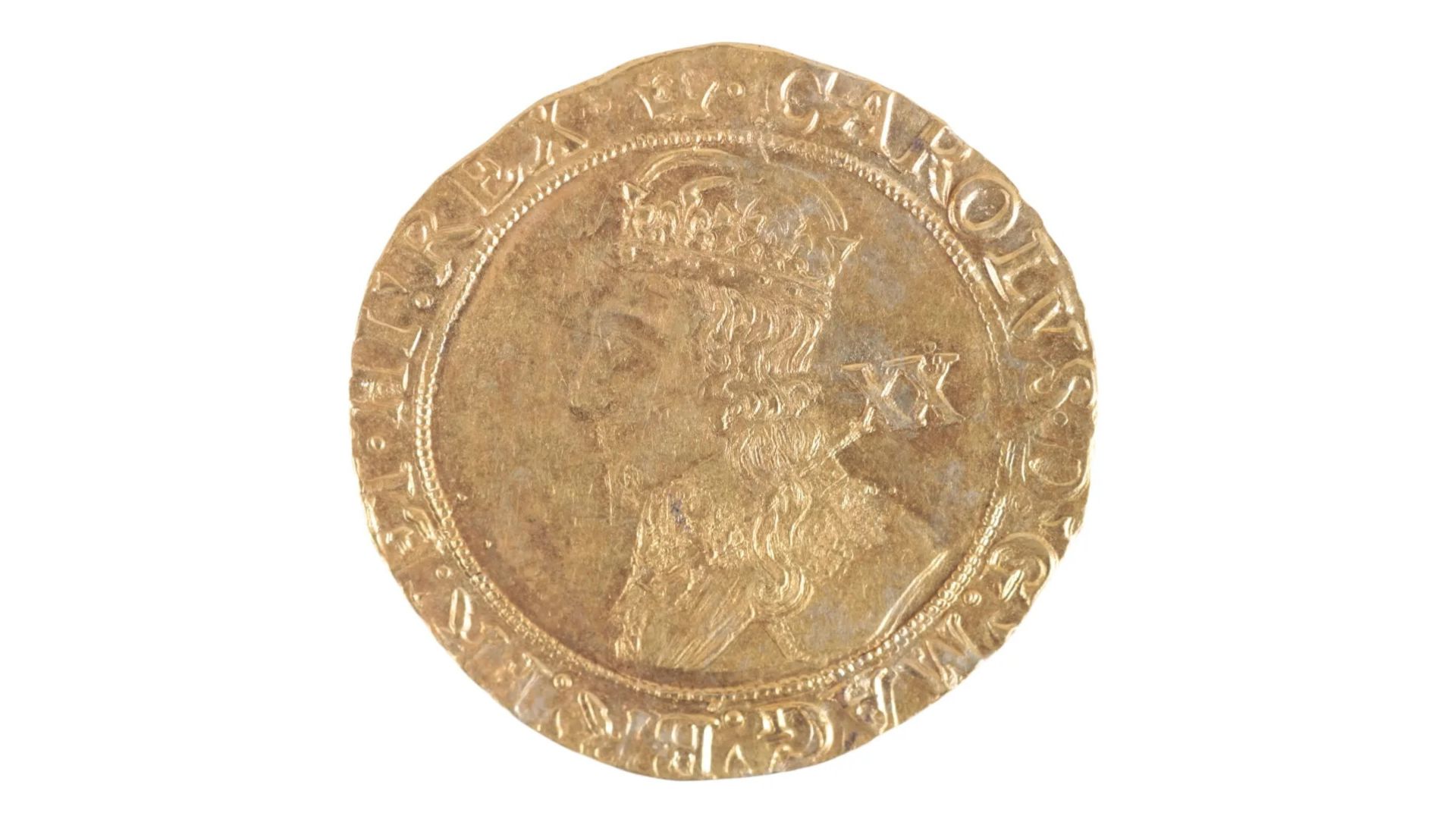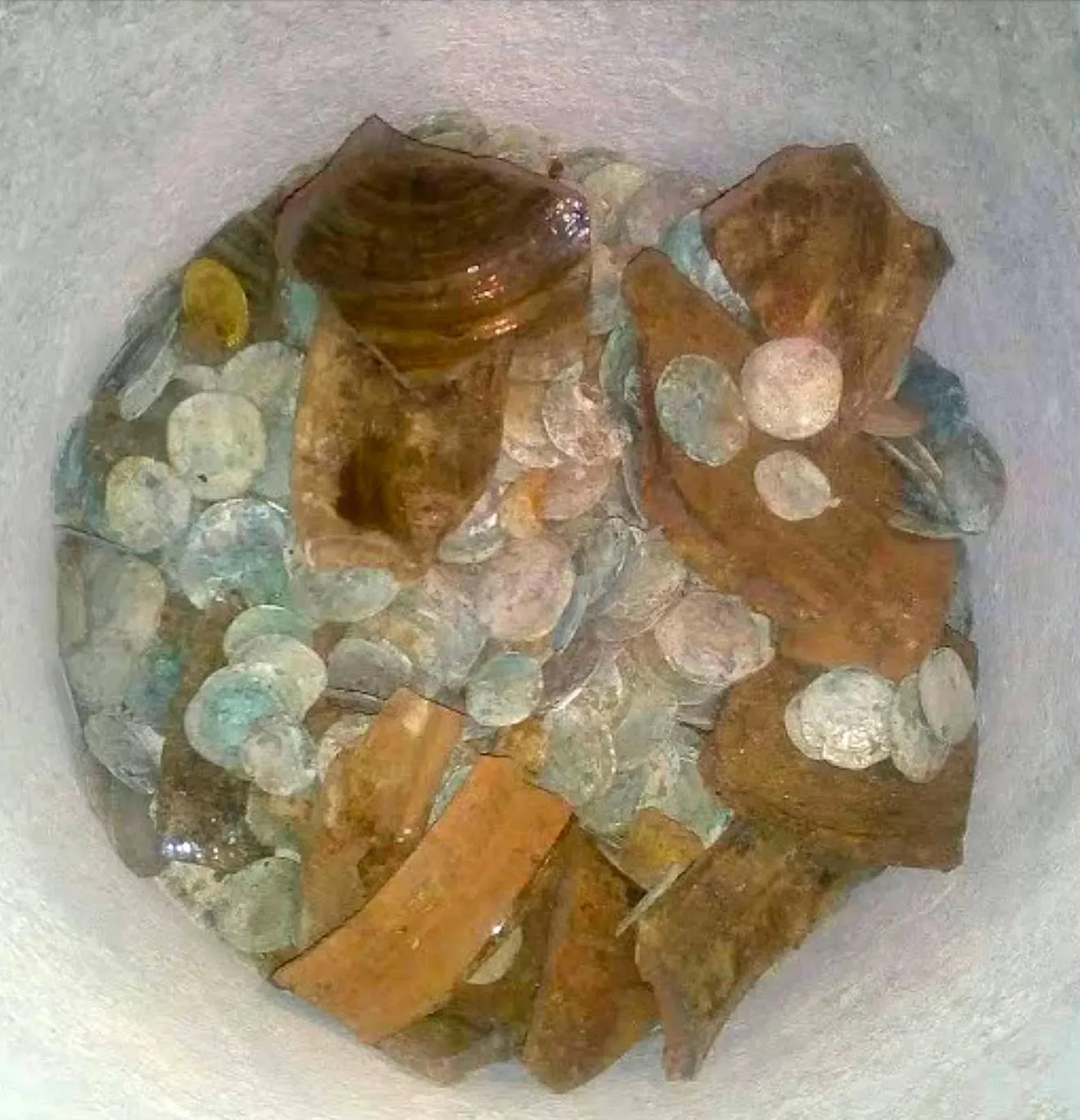Hoard of 17th-century coins hidden during English Civil War unearthed during kitchen renovation
During a kitchen renovation, a family in England unexpectedly discovered a hoard of coins that was likely buried for safekeeping during the first English Civil War.

A family in England discovered nearly 400-year-old buried treasure during a recent home renovation project. The find includes more than 1,000 gold and silver coins that were likely hidden during the first English Civil War.
Betty and Robert Fooks unexpectedly unearthed the 17th-century hoard at their cottage in South Poorton Farm, Dorset, in 2019. Now, these coins have hit the auction block and sold for upward of $75,900 (60,740 British pounds), according to the hammer prices listed by Duke's, an auction house in Dorchester that handled the sales.
Robert Fooks made the discovery while pickaxing the kitchen floor to remove about 2 feet (0.6 meter) of flooring material, including modern concrete, old flagstone and bare earth. Then, he saw a broken glazed-ceramic vessel brimming with coins in the layer of soil dating back about 400 years. It's unclear if the bowl was broken before or during the recent discovery, according to Duke's.
The couple contacted a local finds liaison officer, who arranged for the coins to be sent to the British Museum, where they were cleaned and identified, according to The Guardian. The British Museum noted that the coins were likely deposited on a single occasion between about 1642 and 1644, dates likely based on the coins' mint dates.
The coins in the collection, named the Poorton Coin Hoard, range from modest sixpences, which were worth six pennies, to a coveted gold "unite" coin that was worth 20 shillings, or 1 pound, and depict the visages of English monarchs Edward VI; Mary and her husband Philip; Elizabeth I; James I; and Charles I, who ruled successively from 1547 to 1649.
Many of the coins sold individually or in groups at auction on April 23. A single gold coin of Charles I brought in the highest price, at 5,000 British pounds ($6,260), while some lots went for far more than their estimated value.
Get the world’s most fascinating discoveries delivered straight to your inbox.
The period in which the coins were likely hidden — 1642 to 1644 — coincides with the first English Civil War, which lasted from 1642 to 1646. The three civil wars were fought between supporters of the English monarch, then Charles I, and Parliament, to determine the balance of power between the crown and Parliament.
"Perhaps the most important short-term significance of the Civil Wars was that it culminated in the execution of King Charles I in 1649 and a republic was established for the first time in English history which lasted 11 years," Waseem Ahmed, a doctoral student of history at University College London who specializes in 17th century British political history but was not involved in the hoard's discovery or analysis, told Live Science in an email..
It's no surprise that people hid their money back then, as warfare during this time included the seizure of opponents' property, he said.
"If you were a royalist or suspected royalist, you could have your estates sequestrated (seized) by the Parliamentary side and vice versa," Ahmed explained. This may be the case for the 17th-century homeowner, as Dorset was a hotspot for troop movements and the turbulence that followed.
It's likely that someone buried the Poorton Coin Hoard with the hopes of safeguarding it and retrieving it later. And while the treasure was certainly safeguarded, its retrieval took four centuries longer than its owner likely desired.
"If we hadn't lowered the floor, they would still be hidden there," Betty Fooks told The Guardian. "I presume the person intended to retrieve them but never got the chance."

Hannah Kate Simon is an archaeologist and art historian with a focus on Roman art and archaeology. Hannah holds a Master's degree in the history of art and archaeology from New York University's Institute of Fine Arts, as well as two bachelor degrees in Art History and Theatre from Indiana University of Pennsylvania. She previously worked at NYU's Grey Art Gallery as a contributor to its exhibition catalogues, interned at the Metropolitan Museum of Art in New York City, and excavated at Aphrodisias, an ancient Greek City in what is now Turkey.



